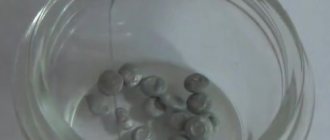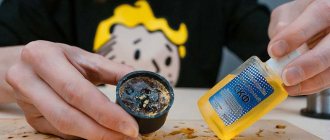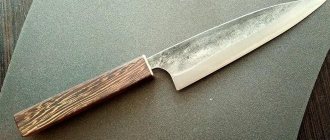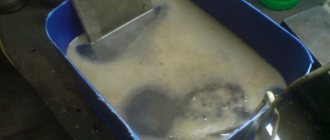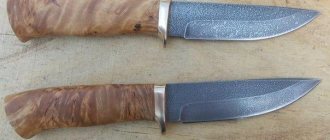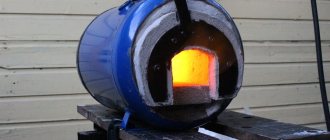Physico-chemical properties and composition
Resin is a solid; to make it liquid, a natural solvent must be added. Usually they take hydrolytic or medical alcohol. Propanol and some other elements are added to the mixture to impart special properties to the material. If the products are mixed correctly, the resulting mixture will look like a homogeneous mass.
The amount of rosin affects the density of the solution. According to its characteristics, the liquid product is the same as solid tallow rosin.
Main properties of the finished substance:
- excellent fluid fluidity;
- penetrates into all cracks and pores present in the metal;
- forms high adhesion between parts.
The substance is not harmful, does not act aggressively on metal surfaces, so it is suitable for any parts.
Due to its good fluidity, liquid rosin is convenient to work with
Recipe for liquid flux made from rosin and alcohol
To make liquid flux, you will still need the same rosin. It is best to use pine rosin, and not some other rosin. You will need to have a small piece, which we will crush during the process of making flux.
You will also need pure ethyl alcohol or solvent. It is best not to experiment and use solvent 646 to make flux - the best of its kind.
To have somewhere to pour the flux, you need a container. A bottle with a small nail polish brush would be just the ideal option. In this case, using a homemade flux for soldering will be much more convenient and simpler.
What you need for cooking
Before you start working on creating liquid rosin for soldering, you need to prepare all the ingredients and tools. For melting you will need rosin, water to dilute the thick mixture and alcohol. The tools you will need are:
- a gas stove or a special burner; solid pieces and liquid will be heated on them until they dissolve;
- a spoon to stir and dose the substance;
- a cup or mortar where rosin is crushed until fine;
- wooden masher;
- a jar for storing the resulting crushed flux.
How to make soldering flux
First you need to grind a solid piece of rosin. This can be done in two ways - scrape off the rosin with a sharp knife or melt it using something hot, for example, a gas burner.
I prefer not to bother and cut the rosin into small pieces. All the same, during the process of making flux, the substance will need to be heated for better dissolution.
So, after the rosin is finely crushed, the resulting powder needs to be poured into a metal container. We also send a small amount of alcohol or solvent there. As for the proportions, the alcohol should lightly cover the crushed rosin.
Well, then, if the crushed rosin contains small pieces, then the resulting mixture will need to be slightly heated. In this case, you should act carefully, since both alcohol and solvent are flammable substances.
The best option would be to immerse the jar of flux in hot water and thus wait until the rosin is completely dissolved. You won’t have to wait long, since pine rosin already dissolves well, either in alcohol or in solvent.
After this, you need to give the flux a little time to cool, and then it can be used for its intended purpose. Tinning various parts with liquid flux is much more convenient and faster, since you can get into the most inaccessible places with a brush. Unfortunately, this cannot be done with solid rosin.
If you liked the recipe for a homemade soldering flux made from rosin and alcohol, then you are welcome to subscribe to the channel. Don't forget to give it a thumbs up and share your comments!
Application
Alcohol-rosin flux has not lost its relevance for many years due to its ease of use and positive soldering results.
It guarantees a strong connection of many parts, especially copper products. Using alcohol-rosin flux, radio circuits and boards are soldered. It spreads well, reaching hard to reach places. When working, low-melting solders are used (up to 330 ℃).
Currently, a full range of soldering products is on sale, including SKF alcohol-rosin flux. Both domestic and foreign manufacturers are trying.
You can buy ready-made SCF flux and not do anything on your own. If all proportions are met in accordance with the standards, the composition will live up to expectations.
How to dissolve rosin
One of the most common solvents is alcohol, since it is relatively inexpensive and accessible, and most importantly, it actively interacts with the material. Dissolution in it occurs quite quickly, especially if the substance is heated. The concentration is determined depending on the soldering conditions. The lowest content of rosin in relation to alcohol in this case can be 1:4. Another option for dissolving rosin in alcohol is to increase the flux content to 50 or even 70%.
When considering options for how to dissolve rosin in turpentine, it is worth understanding that the properties of this material imply high chemical activity, so the flux will dissolve very well here. To do this, you don’t even need to crush it into a powder. This also creates conditions under which the dissolution temperature will be lower than that of other substances, and the degree of absorption is much higher, so that the substance can contain up to 85% solid flux.
Petrol. This substance is also often found in everyday life, so there shouldn’t be any problems finding it. Its dissolution properties are lower than those of turpentine, but it copes with this matter effectively. During soldering, it may evaporate more, since gasoline itself is highly volatile. But it also improves soldering properties, since solder with it melts faster and interacts better with the base metal.
When considering the option of how to dissolve rosin in oil, it is worth understanding that the efficiency of this process will be lower. Liquid rosin may have sediment here, and to dissolve it it must be strongly crushed to a powdery state. Here it is necessary to use heating, but at the same time, the viscosity of the substance will make it easier to apply the desired layer and will not allow it to spread beyond the soldering area.
When considering the question of how to dissolve rosin in water, it is worth understanding that in any case, not pure water will be used, but with various impurities, since this liquid will not simply dissolve solid material.
Alcohol rosin varnish
Rosin is a plant resin. Solutions of plant resins in alcohol are called alcohol varnishes. Liquid rosin as a varnish is used to coat wooden products, which makes them moisture-proof and non-conductive. The frozen layer of rosin is quite acid-resistant, which makes it possible to use rosin varnishes when etching printed circuit boards, facilitating their further soldering. The disadvantage of alcohol rosin varnish is some residual stickiness of the surface after it dries, especially noticeable when heated. But some craftsmen are able to turn this disadvantage into an advantage, thus creating anti-slip coatings.
Features of use
The main difference between the liquid version of the substance and solid rosin is that the former is able to spread in an even layer over the work area without the use of high temperature effects.
Before performing the soldering procedure, any product must be cleaned of traces of corrosion, grease, etc. For this you can use any available solvent. It is important that after cleaning the work area, you need to wait for it to dry completely and only then proceed directly to soldering.
After this, liquid rosin is applied to the work area so that the work area is completely covered with an even layer of the substance. In this case, under no circumstances should you perform any additional operations: heating, mixing with anything, etc. After completing all the above-described manipulations, you can proceed directly to soldering.
It is worth noting that you need to use a sufficient amount of flux so that it can protect the working surface from the appearance of an oxide film.
There is also no guarantee that the soldering procedure will be completely completed the first time. If this fails, then you should increase the amount of flux used and repeat the entire procedure from the beginning.
It is important to perform all movements smoothly and carefully. In the event that flux gets on a non-working surface. It will be very difficult to remove it from there later. Ideally, the soldering procedure should be tediously completed in such a way that there is no need to clean up the work area after completion.
Where else can resin be used?
Using tree resin as an additive to paints speeds up their drying . In electrical engineering you can find cables covered with paper impregnated with resins. The low dielectric constant of rosin allows it to be used for impregnation and creation of an insulating layer between high voltage wires.
The car has several components that can be repaired by soldering; the radiator especially often needs to be repaired, eliminating leaks.
Rosin is inserted into the fire fuse. It melts when the heating temperature of the device increases, breaking the circuit and protecting the equipment from overheating.
Familiar with the natural product and bowed instrument. Before each concert, musicians rub their bow with rosin. Rubbing gives the surface the ability to cause small vibrations as it slides along the string. The sound is deeper and richer. At home, you can stick a pin into a tree and tie a thread to it. It is enough to pass a piece of resin along a stretched thread and the pin will “sing.”
Head of the radio and electronic equipment repair department Serdyukov I.P.: “Rosin is added to the compositions of fluxes made from mineral oils and other substances intended for soldering copper and bronze. It weakens the anti-corrosion reaction and the oxide film is removed faster at temperatures below 450⁰. At home, you can prepare flux for copper by grinding rosin into powder, mixing it with petroleum jelly, and dissolving it in a steam bath. You can weld with pure resin by dipping a soldering iron in it.”
Motor oil for aluminum soldering
Soldering aluminum and aluminum-based alloys can be difficult. On an aluminum surface, upon contact with air, a persistent and refractory oxide film is formed. It creates a serious obstacle to tinning.
It is generally accepted that soldering aluminum requires a strong flux. But you can do without a special tool if you have at hand:
- solder POS-61;
- engine oil;
- soldering iron with a power of 100 W or more.
Need to:
- Clean the soldering area with a knife or sandpaper.
- Apply a little oil.
- Tin the aluminum.
Methods of obtaining
Varieties of rosin come from the method of production, composition and physical state. The main differences in production methods are the substances from which the composition is extracted.
Obtaining rosin
The material is divided into three categories: gum, tallow and extraction resin for soldering.
- Gum rosin is produced by processing the resin of coniferous trees; the main plant is pine, due to its availability and prevalence. The main distinguishing point can be seen in the absence of fatty acids, the use of which is not available in some works.
- The extraction base is produced by extracting gasoline and the main component - a share of pine tree wood. It is distinguished by a lower temperature softening threshold and dark color. The melting point starts from 52 degrees, the acid number varies from 145 to 175. The presence of fatty acids in the composition is 10%; if the substance is chemically clarified, it will be more similar to a gum substance.
- In sulfate-cellulose production, a by-product is released - tallow rosin. It is divided into several grades according to quality and purpose, the method of production from sulfate soap. More expensive varieties are not inferior in properties to the natural product.
A detailed acquaintance with the basis of the craft leads to the conclusion that it belongs to the category of fluxes. In cases where the required item is not at hand, you can use a welding drill.

